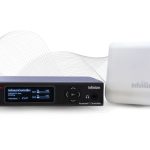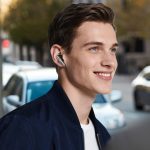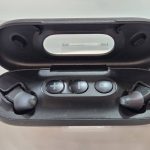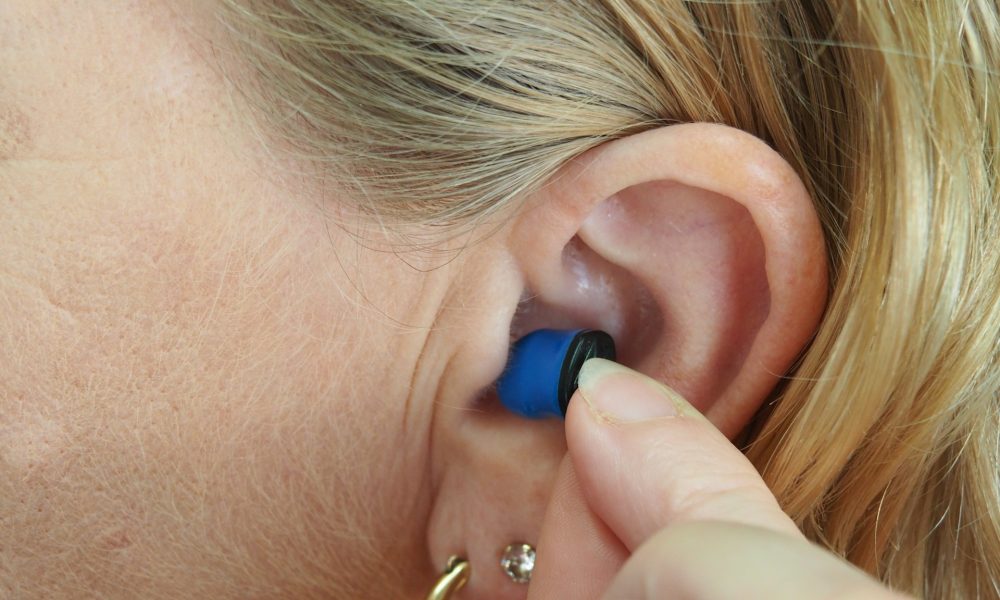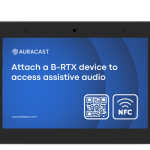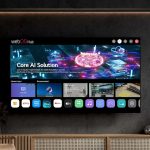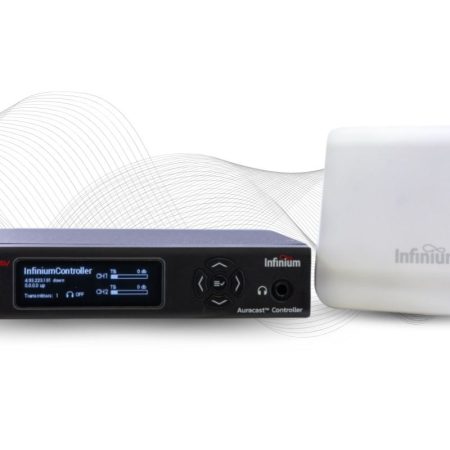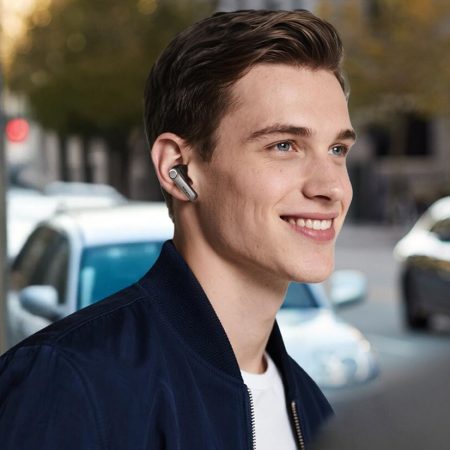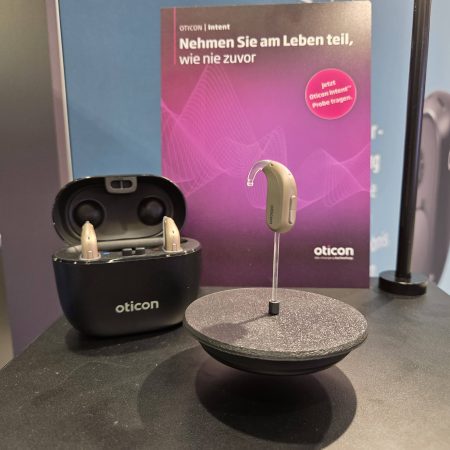Why RNID is excited about Auracast – and what it thinks needs to happen for it to become THE standard
It’s not often that a piece of technology comes along with the potential to transform the everyday lives of millions. But that’s exactly how the Royal National Institute for Deaf People (RNID) views Auracast, the new wireless audio broadcasting system that’s starting to appear in hearing aids, cochlear implants, earbuds and smartphones.
RNID is the national charity supporting people who are deaf, have hearing loss or tinnitus. Founded in 1911, the charity has successfully campaigned for free NHS hearing aids and newborn hearing screening and remains the UK’s only charity dedicated to funding biomedical hearing research.
For Alastair Moore, Technology Lead at RNID, the possibilities of Auracast are not just promising, they are profound.
“At RNID, we’re really excited about Auracast,” he says. “This emerging technology has the potential to be a game-changer for the 18 million people in the UK who are deaf, have hearing loss, or tinnitus, improving accessibility in settings such as healthcare and employment, and in public spaces like cinemas, museums, and theatres.”
It’s a bold claim, but one grounded in practical experience and years of research.
For many people with hearing loss being part of everyday moments, such as watching a film, visiting a pub with friends, attending a work meeting, or navigating public transport with cancelled trains and late buses, can still be a challenge.
“Clear communication – whether it’s speech, or the ability to engage fully in activities where sound forms a significant part of the experience – is essential in everyday life. Yet barriers to hearing sound can leave many people feeling isolated, excluded, and disconnected,” Alastair explains.
That can be caused by a hearing aid unable to process the speech you are trying to listen to; instead, it is picking up everything and trying to feed that jumble of noise straight into the ear canals. Or it can be a hearing loop that hasn’t been turned on or turned up. Some venues even have a loop, but it has broken, and no one knows how to fix it as the wires are embedded in the walls or floor.
For hard-of-hearing people, public spaces can be a minefield to navigate, and the extra pressure it puts on them to hear even ordinary conversations can be mentally exhausting. And that’s before you get to the problem of hearing announcements over the Tannoy. That platform alteration? For some, there is more chance of picking all six lottery numbers than figuring out if the train is now departing platform two or three.
Enter Auracast, the new shared audio standard that uses Bluetooth LE Audio technology to allow venues to effortlessly share audio not just to those who need help with their hearing, but headphone wearers who want to cut out distractions and hear the sound direct.
Auracast works by sending high-quality audio directly to a user’s hearing device, be it hearing aids, headphones, earbuds, or cochlear implants. It removes the need for extra hardware or special seating areas. And no more reliance on wiring that may or may not be working.
Alastair says: “What makes Auracast truly transformative is its ability to broadcast high-quality, low-latency audio directly to hearing aids, cochlear implants, and other compatible devices.
“This enables seamless communication and access to sound without the need for additional equipment.
“It allows users of hearing aids and cochlear implants to access the same audio in real time as everyone else, without needing separate or specialised equipment.”
Real-time access could have implications across everyday life.
“This could make a significant difference in a wide range of situations, from watching TV with loved ones, to participating in work meetings, fitness classes, or enjoying performances in public venues such as theatres and cinemas,” he explains.
How RNID moved from excitement to evidence
RNID’s excitement isn’t just theoretical. The charity has been testing early Auracast setups through its own research panel, and the results are already telling.
“We’re seeing a great deal of interest in Auracast, from companies integrating it into their products, to members of our Research Panel who are eager to help test new features and devices,” Alastair continues.
“It’s incredibly rewarding to witness the moment someone hears clearly in a situation where they were previously excluded and see their faces light up with recognition. These experiences also provide valuable insights into how early versions of the technology can be refined to make them even more user-friendly and accessible.”
And rather than replacing current systems, RNID sees Auracast as an additional option, especially in complex or noisy environments.
“As the technology becomes more widely adopted, it can complement existing solutions like hearing loops in public spaces, offering greater flexibility and personal control over how people access sound,” he says.
“Venues, organisations, and institutions will have the option to integrate Auracast alongside their current systems, enhancing accessibility for a broader audience.”
For those who want to explore the benefits now, Alastair is inviting them to contact the charity.
“For any organisations that want to explore the potential benefits of this revolutionary new technology in more detail, we encourage them to contact RNID directly to find out more.
“Get in touch by visiting www.rnid.org.uk/auracast.”
What’s holding Auracast back?
Despite its potential, there are still challenges to overcome before Auracast becomes a universal feature – particularly for NHS users. The RNID is keen to see them overcome.
“There is no doubt that Auracast is the future. The question is how quickly it will become mainstream and whether everyone will be able to access it in all the situations where it is needed,” Alastair says.
The barriers are varied and start with coordination across the tech industry: “For Auracast to deliver on its potential, it needs the entire industry to consider how the technology will be used in different situations, and to ensure that devices work together to deliver a high-quality, frictionless experience.”
While consumer devices are starting to include Auracast as standard, it will be some time before those who are hard-of-hearing have the tech in their hearing aids or cochlear implants. This is partly because most people upgrade their hearing aids every four or five years, and partly because not all manufacturers are currently offering Auracast-enabled devices.
“The consumer technology industry will likely rapidly adopt this technology over the next 18 months, but it will probably be several years before Auracast-enabled devices are available as standard on the NHS, and even longer before everyone has them,” Alastair says.
“Big tech companies are clearly committed to the technology, with smartphone support either present in their products now, or expected imminently. Consumer headphone brands also have products on the market now.
“Support amongst regulated medical devices such as hearing aids and cochlear implants is coming too, but several manufacturers have so far only announced support via ‘future firmware upgrades’ to their latest ‘flagship’ products. We need to see the updates rolled out and the technology supported throughout the product lines.”
There’s also the question of user awareness. Currently, Auracast is an emerging technology that has early adopters and needs people to champion it to let others know of its benefits and capabilities.
“Other potential barriers include public awareness and training. Users need to be aware of Auracast and how to use it effectively, which requires education and support,” Alastair explains.
“Increased awareness will drive demand for retrofit transmitters for personal use.
“People who have experienced Auracast on personal devices will want the same ease of access to their other equipment, such as TVs and computers.”
And venues themselves – from GPs to gyms – will need the right infrastructure. That means bringing in experts to install the systems, either as a new kit-out or a retrofit that piggybacks on to an existing system. Different places will need different solutions and, if the fit is removing the telecoil system, a backwards compatible system such as the Auri from Ampetronic or the B-RTX from Bettear, will ensure those with older hearing aids will still be able to hear.
“There are potential cost, time and effort challenges for infrastructure roll-out,” Alastair warns.
“Venues and public spaces will need to invest in compatible broadcasting hardware, which may be slow without regulatory pressure or incentives.
“However, as retrofit and professional-grade transmitters become available, venues will start to install transmitters alongside loop systems or in place of existing infrared or WiFi-based systems.
“As much larger volumes of units are shipped, and with the relatively small size of the hardware, this will make Auracast comparatively inexpensive in the long term.”
One less obvious use for Auracast is secure, private conversations – particularly where discretion is important. This means using password-protected links, which adds a layer of complexity to the Auracast setup, and this might phase both the person who needs to hear via Auracast and the non-technically minded person who they are speaking with.
Bettear has a solution with its B-Pass, which we covered in this interview with the firm’s Ariel Caner.
“One of the situations where Auracast is very useful is when there is a requirement for a conversation to be kept private,” Alastair says.
“This is straightforward when a smartphone can be used as an Auracast assistant.
“However, for people who don’t use smartphones, these situations require alternative Auracast assistant devices or methods of access. This is definitely possible, but the industry needs to make it happen.”
RNID makes a call for collaboration
For Auracast to reach its potential, RNID believes multiple sectors must come together. Alastair is hopeful this will happen.
“RNID believes that overcoming these challenges will require collaboration between hearing technology manufacturers, venue operators, and policymakers,” he says.
“Advocacy for standards, funding support, and public education campaigns will all play important roles in ensuring Auracast is accessible and beneficial to as many people as possible.”
It’s a call to action – and a reminder that progress in hearing technology depends on more than innovation alone. With the right partnerships, RNID believes Auracast can help make equal access to sound a reality.
The RNID offers support to those who are deaf, have hearing loss or tinnitus and need free confidential and impartial information and support. Its offices are open from 8.30am to 5pm Mondays to Fridays.
If you need support, want to learn more about hearing technology, or want to support the RNID’s work, visit: www.rnid.org.uk


